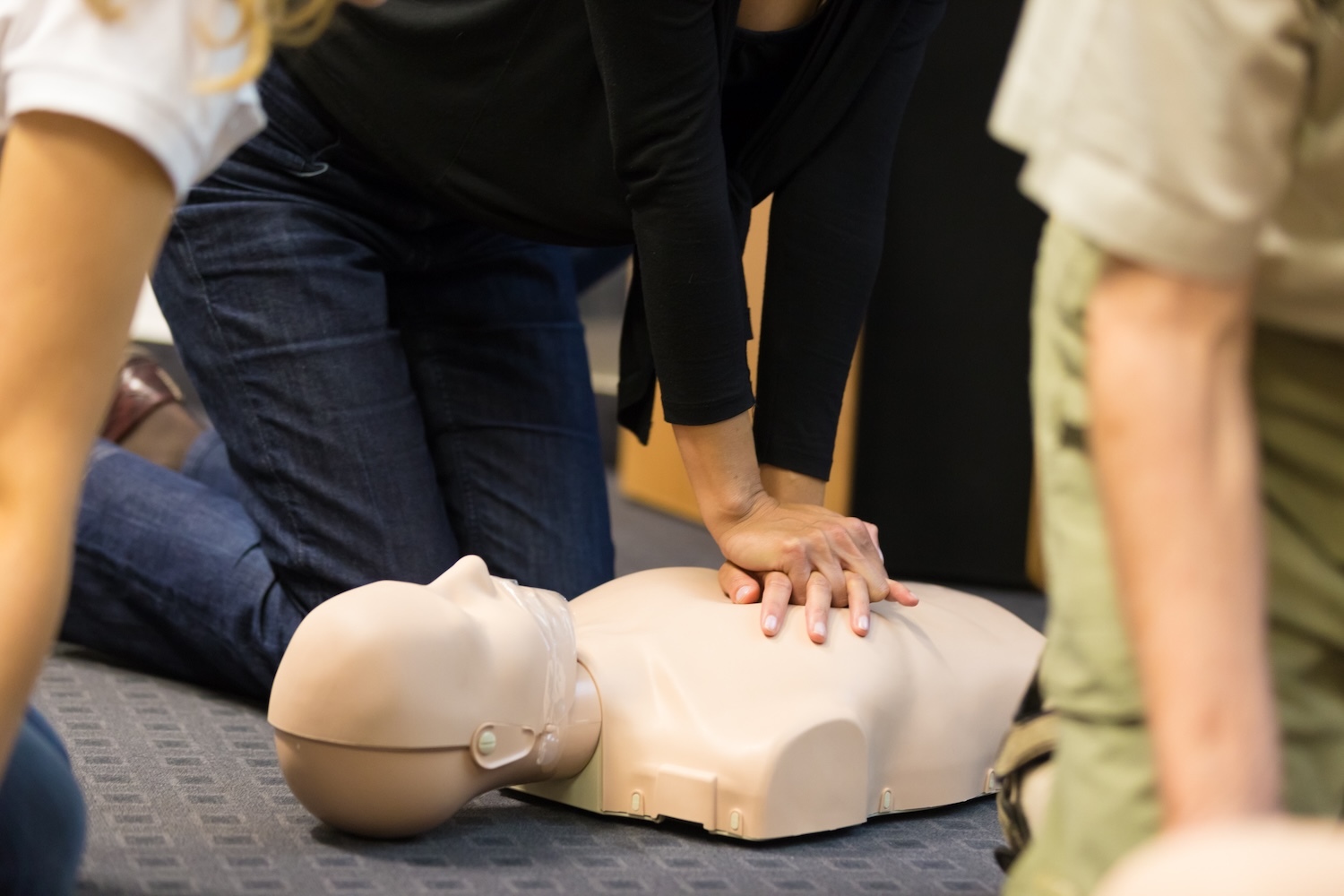What to Do If Someone Is Choking (Adult, Child, Infant)
Knowing what to do if someone is choking can save a life. Choking occurs when food or another object becomes lodged in the airway, preventing normal breathing. It can happen anywhere — in the workplace, at school, or at home — and fast, effective first aid for choking can make all the difference.
This guide explains how to recognise the signs of choking, outlines the correct first aid steps for adults, children, and infants, and details when to call Triple Zero (000).
All advice is based on the Australian Resuscitation Council (ARC) Guidelines and aligns with the training delivered in nationally recognised courses such as:
- HLTAID009 Provide Cardiopulmonary Resuscitation
- HLTAID011 Provide First Aid
- HLTAID012 Provide First Aid in an Education and Care Setting
Recognising the Signs of Choking
Choking can be mild (partial obstruction) or severe (complete obstruction). Recognising which one it is will guide your response.
Mild Airway Obstruction
- The person is coughing strongly.
- They can breathe, speak, or make sounds.
- They may appear distressed but air is still moving through the airway.
Do not perform back blows or chest thrusts for someone who is coughing and able to breathe.
Instead, encourage them to keep coughing to clear the obstruction naturally.
Only intervene if the coughing becomes weak or the person can no longer breathe effectively.
Severe Airway Obstruction
- The person cannot breathe, speak, or cough.
- They may clutch their throat (the universal sign for choking).
- Their face or lips may turn blue or pale.
- They may become silent or collapse if the blockage is not cleared.
A complete airway obstruction is a medical emergency — act immediately.
First Aid for Choking in Adults and Children
If someone is choking and unable to breathe, speak, or cough effectively, follow these steps.
Step 1: Encourage Coughing (if possible)
If the person can still cough, encourage them to continue coughing forcefully to clear the object on their own.
If the obstruction persists and breathing becomes difficult, move to the next step.
Step 2: Call for Help
Ask someone nearby to call Triple Zero (000) immediately.
If you are alone, provide first aid for one minute before calling for help.
Step 3: Give Up to 5 Back Blows
- Stand slightly to the side and behind the person.
- Support their chest with one hand and lean them forward so the object can exit the mouth.
- Deliver up to five sharp blows between the shoulder blades with the heel of your hand.
- Check after each blow to see if the obstruction has cleared.
Step 4: Give Up to 5 Chest Thrusts
If back blows are not effective:
- Stand behind the person and wrap your arms around their chest.
- Place one hand on the centre of the chest (between the nipples) and the other on top.
- Deliver up to five quick, firm thrusts inwards.
- Check after each thrust if the obstruction has cleared.
Continue alternating five back blows and five chest thrusts until the airway is clear or the person becomes unresponsive.
If the Person Becomes Unresponsive
- Call Triple Zero (000) if not already done.
- Begin CPR immediately — 30 chest compressions followed by 2 rescue breaths.
- If an AED (Automated External Defibrillator) is available, turn it on and follow the prompts.
- Continue CPR until the person starts breathing normally or emergency services arrive.
Even if the person appears to recover, they should always be checked by a medical professional to ensure no airway injury or residual obstruction.
First Aid for Choking in Infants (Under 1 Year)
Infants are at higher risk of choking because their airways are smaller. Follow a gentle, modified approach.
Step 1: Check for Responsiveness
If the infant is coughing effectively, encourage them to keep coughing.
If the infant is unable to breathe, cry, or make noise, begin back blows.
Step 2: Give Up to 5 Back Blows
- Sit or kneel and support the infant face-down on your forearm.
- Hold their jaw, keeping the head lower than the chest.
- Deliver up to five firm back blows between the shoulder blades using the heel of your hand.
- Check if the obstruction has cleared after each blow.
Step 3: Give Up to 5 Chest Thrusts
If back blows don’t clear the obstruction:
- Turn the infant face-up while supporting their head and neck.
- Place two fingers in the centre of the chest, just below the nipple line.
- Give up to five quick chest thrusts, checking after each one.
Continue alternating five back blows and five chest thrusts until the airway is clear or the infant becomes unresponsive.
Step 4: If the Infant Becomes Unresponsive
- Call Triple Zero (000) immediately.
- Begin infant CPR using two fingers for compressions — 30 compressions followed by 2 gentle breaths.
- Continue until help arrives or the infant begins breathing normally.
When to Seek Medical Attention
Always seek medical review after a choking incident if:
- There was a complete airway blockage, even if brief.
- The person inhaled food or fluid into the lungs.
- There are ongoing symptoms such as coughing, wheezing, or voice changes.
Prompt assessment helps prevent complications such as infection or airway damage.
Why First Aid Training Matters
Choking can happen to anyone, anywhere — and quick action saves lives.
In nationally recognised courses like HLTAID009 Provide Cardiopulmonary Resuscitation, HLTAID011 Provide First Aid, and HLTAID012 Provide First Aid in an Education and Care Setting, you’ll learn to:
- Recognise mild vs. severe airway obstruction
- Apply safe and effective back blows and chest thrusts
- Perform CPR and use an AED
- Respond confidently to choking in adults, children, and infants
Take Action Today
Don’t wait until an emergency happens.
Gain the skills and confidence to respond to choking, cardiac arrest, and other life-threatening situations with Australian Pacific Training Solutions, part of the Allens Training Pty Ltd (RTO 90909) network.
We deliver nationally recognised first aid and CPR training across Melbourne, Geelong, and regional Victoria.
You can enrol in a public course at one of our training venues, or book a group session at your workplace for your team.
Visit auspactraining.com.au to find upcoming course dates and secure your booking today.



